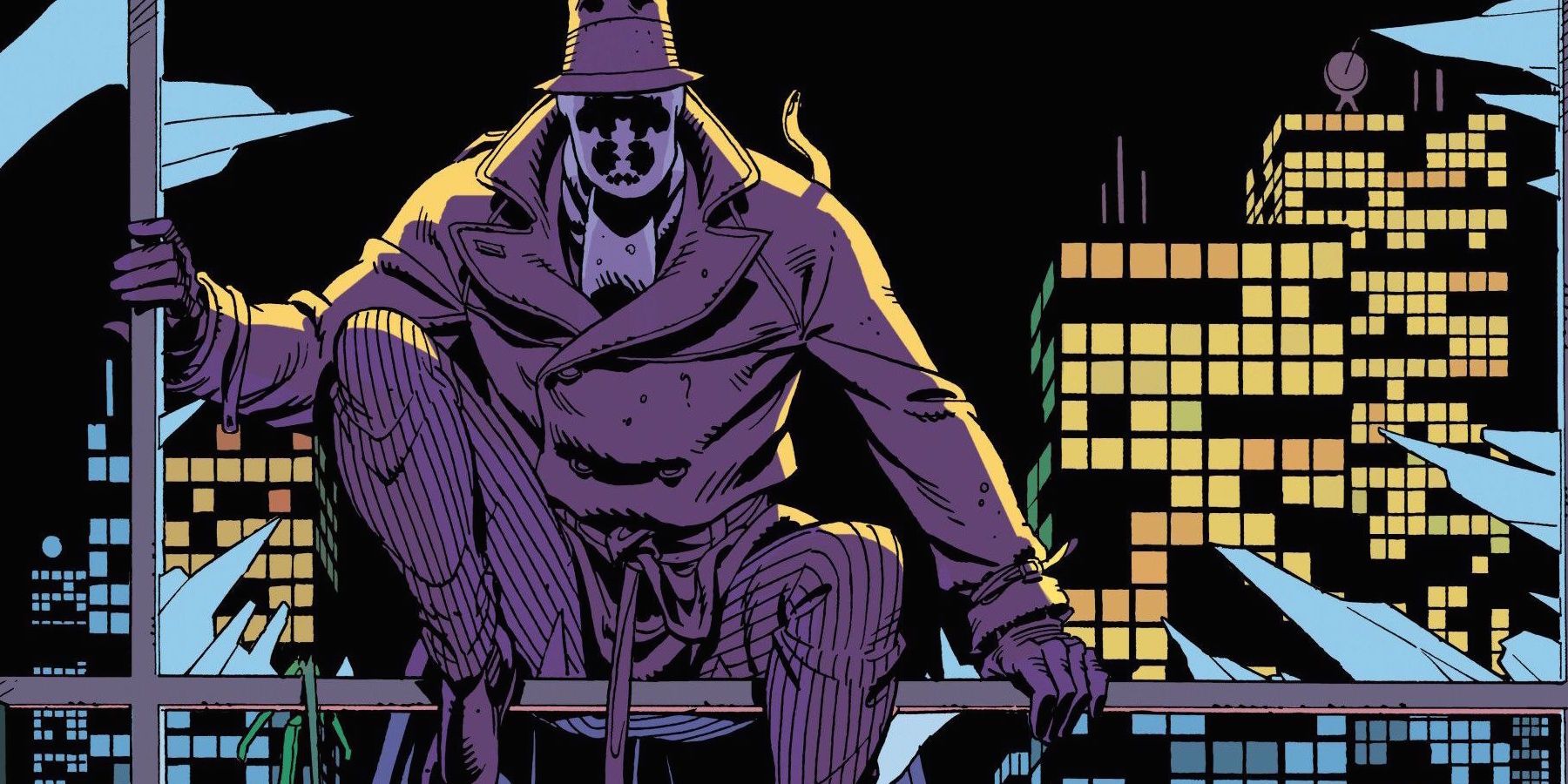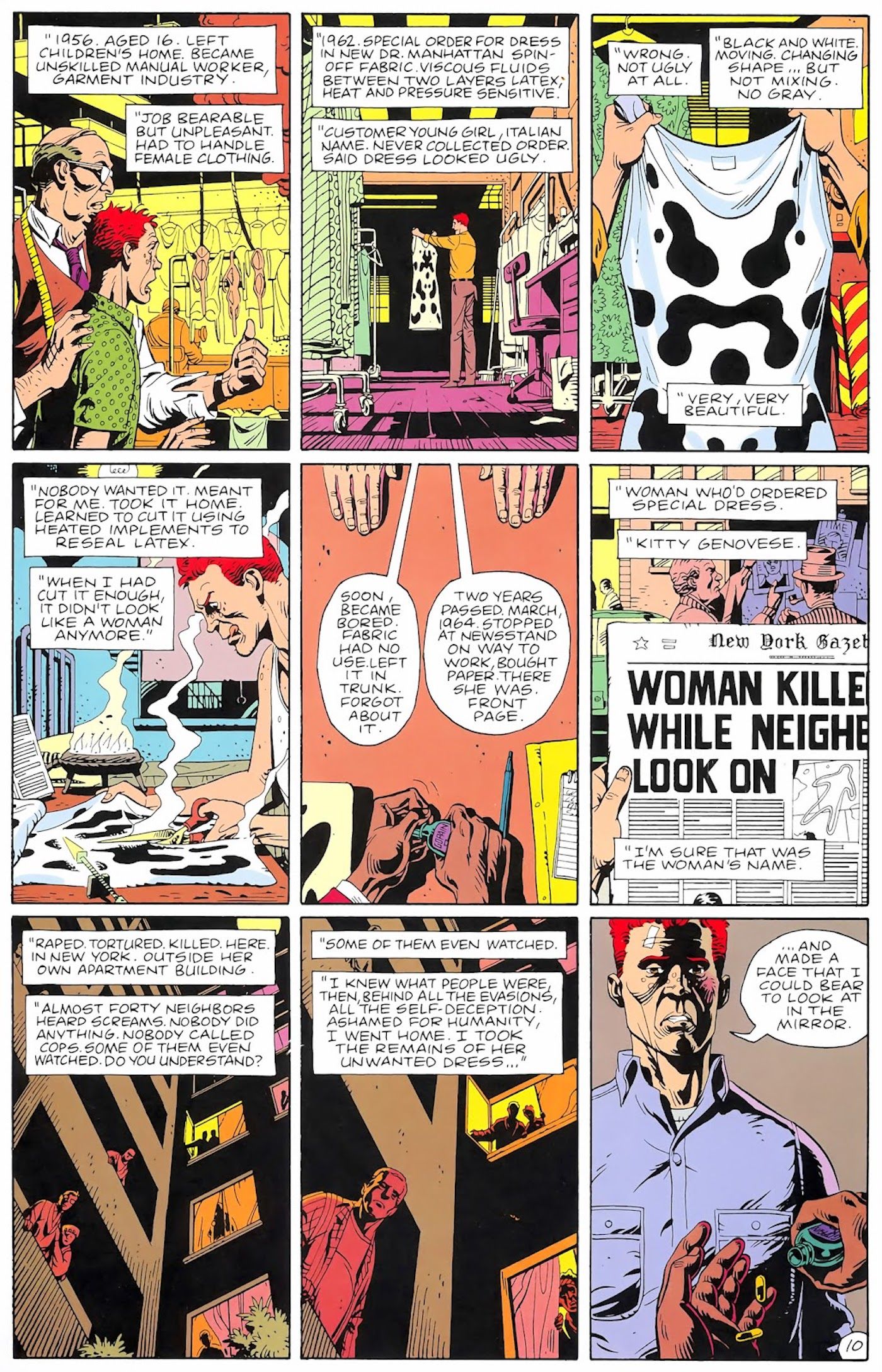Rorschach is one of the most memorable characters in Alan Moore’s seminal work Watchmen, with an origin rooted in a real-world crime: the murder of Kitty Genovese. Taking inspiration from the heinous stories around this brutal murder, Rorschach creates his iconic mask from Kitty’s dress. But his fundamental misunderstanding about the crime reveals a shocking truth about Rorschach's psyche.
The 1964 murder of 28-year-old Kitty Genovese in Queens, New York has developed into a bit of an urban legend. The story, which Rorschach cites as the inspiration for his vigilantism, alleges that nearly 40 people witnessed the violence and did not act. The truth is that neighbors originally scared off the assailant, who later returned, and that several tried to contact the police. Alan Moore pulled inspiration from the real-life crime and directly connects Kitty to Walter through one of the hallmark features of comic book superheroes: the mask. However, it is likely that Moore did not intend for Rorschach to be thought of as a hero, and his origin is much darker than it appears.
Without a doubt, Walter Kovacs aka Rorschach harbors heaps of animosity for society and humanity. Time and again throughout Watchmen, Rorschach provides his insight into how repulsed he is with human nature. As Rorschach, Kovacs delivers brutal, violent, vigilante justice to criminals in New York. During the portion of the story detailing the origin of his mask, Rorschach mentions that when he heard about Genovese’s violent gruesome murder, he knew exactly what humans were. This revelation does not come from the murderer, but rather comes from the urban legend revolving around the spectators who did not help. The myths about Genovese's murder and the apathetic bystanders had been dispelled by the time Watchmen was released in 1986. As a prolific researcher, Moore would have known the truth about the event and intentionally based Rorschach's motivations on the common misconceptions about the case, which Kovacs uses to justify his disdain for the human race.
Rorschach expresses a twisted, perverse pleasure in denying the salvation of society’s criminals and rejects. His various monologues and the disturbing, dark origins of his mask reveal that Rorschach is not the idealistic vigilante he is commonly thought to be. Rorschach is not a hero. Rather, when Kovacs wears the mask, he represents a profoundly pessimistic, viciously violent, autocratic deputy of an extremist view of justice. The connection to the Genovese murder demonstrates that Rorschach doesn’t view his work as a call to action to deliver justice, but rather a reaction to the inaction of society to dispense violence as he sees fit.
The connection created between Genovese's brutal real-life murder and Kovacs' fictional violent, perverse justice reveals exactly what Alan Moore likely had in mind for the character. Rorschach's origin does not show that he is a hero who witnessed injustice and took action, but rather a problematic pessimist, ready to believe the worst of human nature. In the bleak America crafted by Alan Moore in Watchmen, the answer to a flailing society, at least to Walter Kovacs, is Rorschach.


